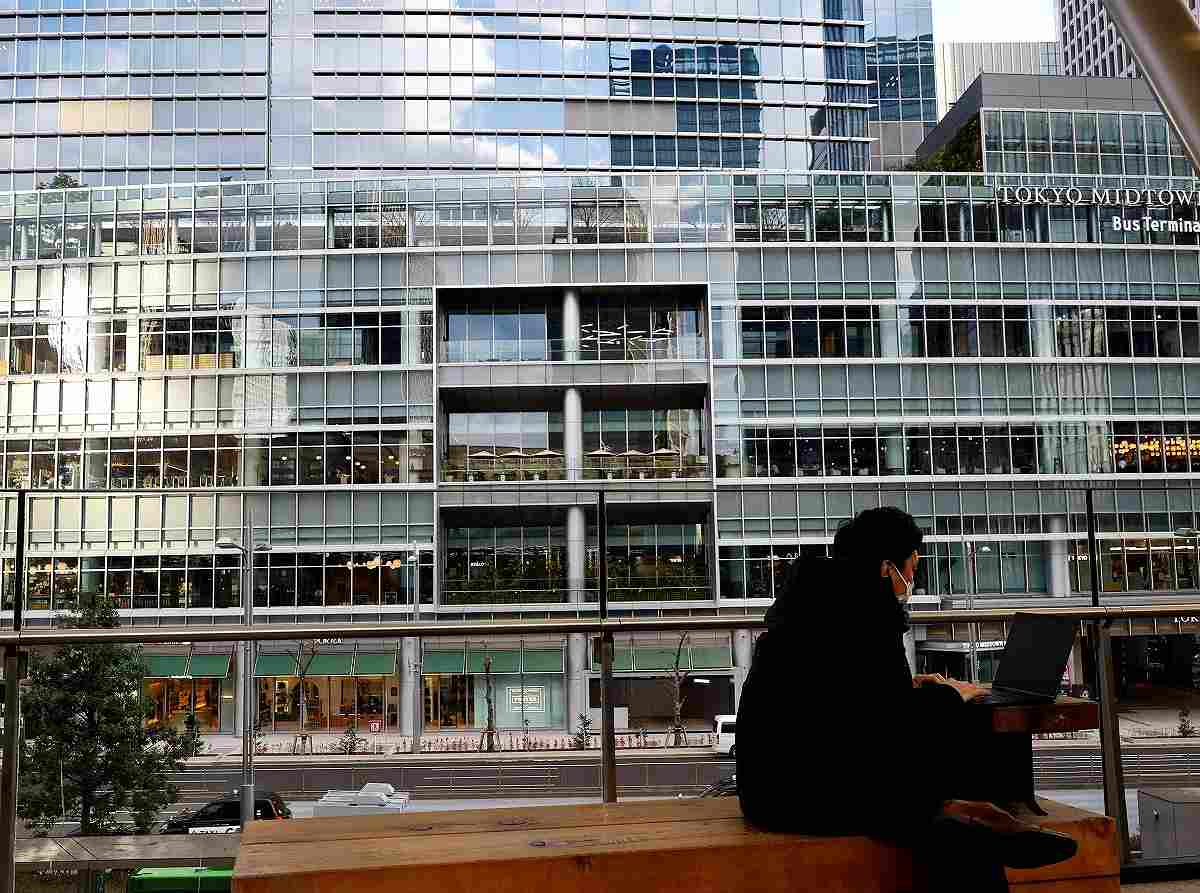
A man uses a laptop on a bench at a business district in Tokyo, Japan January 23, 2024.
10:22 JST, September 27, 2024
TOKYO (Reuters) – Core inflation in Japan’s capital matched the central bank’s 2% target in September, data showed, a sign the economy is making progress in meeting the criteria for further interest rate hikes.
While political and overseas economic uncertainties may prod the Bank of Japan to stand pat in October, the solid inflation reading will keep alive market expectations for another rate hike in December or early next year, analysts say.
The Tokyo core consumer price index (CPI), which excludes volatile fresh food costs, rose 2.0% in September from the previous year, data showed on Friday, matching the BOJ’s target and the median market forecast.
It slowed from a 2.4% increase in August due largely to the resumption of government subsidies to curb utility bills. Tokyo CPI data is considered a leading indicator of nationwide prices.
A separate index that strips away the effects of both fresh food and fuel costs, closely watched by the BOJ as a broader price trend indicator, increased 1.6% in September from a year earlier after rising at the same pace in August.
Service prices rose 1.2% in September after a 1.3% gain in August, suggesting that companies were passing on labor costs from rising wages as the BOJ projects.
The BOJ ended negative interest rates in March and raised its short-term policy rate to 0.25% in July on the view Japan was making steady progress towards durably achieving its 2% inflation target.
BOJ governor Kazuo Ueda has said the bank will keep raising rates if inflation remains on track to stably hit 2% as it projects, though he stressed the bank will spend time gauging how global economic uncertainties affect Japan’s fragile recovery.
Japan’s economy expanded an annualized 2.9% in the second quarter as steady wage hikes underpinned consumer spending. Capital expenditure continues to grow, though soft demand in China and slowing U.S. growth cloud the outlook for the export-reliant country.
"News Services" POPULAR ARTICLE
-

American Playwright Jeremy O. Harris Arrested in Japan on Alleged Drug Smuggling
-

Japan’s Nikkei Stock Average as JGB Yields, Yen Rise on Rate-Hike Bets
-

Japan’s Nikkei Stock Average Licks Wounds after Selloff Sparked by BOJ Hike Bets (UPDATE 1)
-

Japanese Bond Yields Zoom, Stocks Slide as Rate Hike Looms
-

Japan’s Nikkei Stock Average Buoyed by Stable Yen; SoftBank’s Slide Caps Gains (UPDATE 1)
JN ACCESS RANKING
-

Keidanren Chairman Yoshinobu Tsutsui Visits Kashiwazaki-Kariwa Nuclear Power Plant; Inspects New Emergency Safety System
-

Imports of Rare Earths from China Facing Delays, May Be Caused by Deterioration of Japan-China Relations
-

University of Tokyo Professor Discusses Japanese Economic Security in Interview Ahead of Forum
-

Japan Pulls out of Vietnam Nuclear Project, Complicating Hanoi’s Power Plans
-

Govt Aims to Expand NISA Program Lineup, Abolish Age Restriction
























